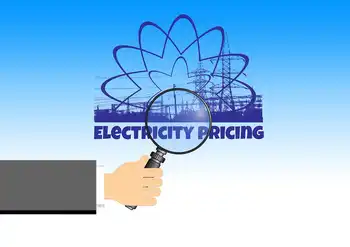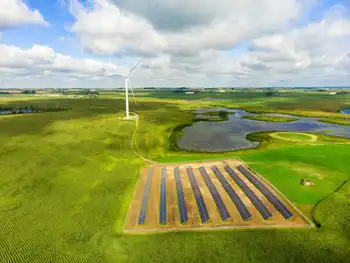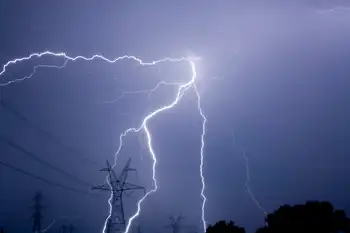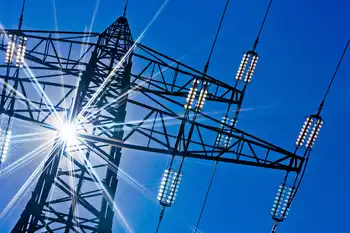Romanians ponder price of French technology
BUCHAREST, ROMANIA - Romania plans to build a second nuclear power station, but its rumoured interest in French nuclear technology may prove too expensive an option.
News of the countryÂ’s flirtation with French nuclear technology arose when President Nicolas Sarkozy visited Bucharest last February.
“Our strategic partnership will give us the possibility to actively cooperate in the field of energy, especially nuclear energy, gas-generated energy and the weapons industry,” said Sarkozy.
But Romanian Minister of Economy and Finance Varujan Vosganian denied there was a “deal” to buy French nuclear technology. This is an export product Sarkozy is adamant to promote - especially among developing countries such as the United Arab Emirates and in northern Africa.
France may want to sell its technology as the best option for RomaniaÂ’s second nuclear facility, while the Canadians who are responsible for the know-how used in the first power station, at Cernavoda in Constanta county, argue theirs is the cheaper choice.
The French option uses low-enriched uranium and light water, which is found in Europe under the name of European Pressurized Reactor (EPR) and, with some modifications, in Russia, Switzerland, Germany, South Korea, Japan and Iran. Only a few of these states own the technology to produce fuel for nuclear power stations. Most have to buy the know-how from the big countries, such as France.
The second type uses natural uranium and heavy water. This is the Canadian technology, known as CANDU, which Romania has adopted for Cernavoda.
“For Romania this technology is perfect because the country has uranium resources in its soil and the facilities to produce the fuel for its nuclear plant,” says Adrian Rizea, technical director of the Centre of Technology and Engineering for Nuclear Projects (CITON). “The country cannot afford the European Pressurized Reactor offered, for example, by French multinational Areva.”
CITON worked on the construction of the two operational nuclear reactors at the Cernavoda power station and will assist in building the third and fourth units after the auction for the construction consortium later this year.
Reducing the energy dependency on increasingly expensive gas and oil is the main argument for building a second nuclear plant.
“Romania has uranium, it makes its own heavy water, its own fuel and has engineering capabilities for CANDU,” Ala Alizadeh, international vice-president marketing and sales for Atomic Energy of Canada Limited (AECL), tells The Diplomat. “With Romania’s nuclear infrastructure now, the country is completely nuclear self-sufficient.”
Switching to another type of nuclear technology means building new nuclear infrastructure from scratch. Alizadeh believes the extension of CANDU technology to another site is the most economic and logical option. A nuclear reactor built with European technology costs at least three times more than a CANDU reactor, experts tell The Diplomat.
This year the Ministry of Economy begins a site selection study to host a new nuclear installation. This will probably use research from 20 years ago, which chose the site on the Danube at Cernavoda.
At that time, Piatra Neamt in Neamt county was understood to be the best location for a nuclear power station based on the EPR technology, while Fagaras, Brasov county, was considered more suitable for CANDU. Rizea believes these two sites will remain favourites.
A site has to protect the public and environment from radioactivity due to accidents and from daily operations. Climate and ground conditions are also taken into account. “If the wind blows heavily from the site to a populated area by, the location is abandoned,” Adrian Rizea explains.
A nuclear power station needs a deep-water source, stable soil and hard rock to sustain heavy weights. Crucial for a Romanian choice is a distance from areas of high-risk for earthquakes, which includes Vrancea county. A nuclear plant also needs acces to a large amount of water to cool down the installations, such as the Danube-Black Sea Canal which supports Cernavoda.
A site selection study takes at least two years and needs ten to 15 years from the moment that the decision is made to build a nuclear power station to the first foundations.
Construction for one nuclear power reactor take usually around six years to finish, if the nuclear infrastructure is already in place. This means a second nuclear facility could not be ready before 2026.
The public and local authorities also need to accept the location. Resistance to the nuclear option in Romania has so far been muted. But environmental NGOs such as Greenpeace oppose such developments due to the risks to the environment if a reactor malfunctions and their production of nuclear waste. Greenpeace is likely to frustrate the process of approving a new power station in Romania. However nuclear energy has entered into favour among some environmentalists due to its low quantity of carbon emissions.
The five nuclear powers - United States, Russia, Japan, France and Great Britain, along with India and most probably Pakistan and Iran, have the technology to produce low-enriched uranium for the EPR technology.
This knowledge is not for sale and access to enrichment technology for Romania would be difficult. This means Romania will not be able to produce the low-enriched uranium, but will have to buy this on the market. This will prove more costly than using its own natural uranium.
This would also mean Romanian experts in nuclear energy would need training to run a different kind of nuclear plant to Cernavoda. Rizea argues that all these expenses increase the price for the electricity produced with European technology in comparison to the price for electricity produced by CANDU.
According to the Ministry of Economy and Finance, RomaniaÂ’s uranium resources will run out by 2017. But the technical director of the Centre of Technology and Engineering for Nuclear Projects says this is the worst-case scenario.
Uranium is ubiquitous in rocks, salt water and even in live organisms and is more plentiful than gold, silver or platinum. Over half of the worldÂ’s uranium supply is found in three countries - Australia (30 per cent), Kazakhstan (17 per cent) and Canada (12 per cent).
Around 17 per cent of the worldÂ’s electricity is generated from nuclear reactors and demand is set to increase, given the declining oil supplies and pressure to find cheaper forms of energy. In 2007 there were 439 nuclear power reactors in operation in 31 countries.
The rising cost of oil to around 100 dollars a barrel and the energy ‘crisis’ of the last four years has brought nuclear energy back into the spotlight. The United States and Russia intend to build around 20 more nuclear power stations each in the next 30 years. Now nuclear power ensures a third of the electricity demand in the European Union and 80 per cent of France’s electricity.
“Like any other fuel source, uranium has gone up in terms of prices over the last three to four years with the same trend like gas and oil,” argues Alizadeh.
RomaniaÂ’s second nuclear power station will be built through an auction to private companies, in much the same scenario as the existing nuclear power station CernavodaÂ’s tender for units 3 and 4, which are due this year.
The majority share will be private. Romanian state energy company Nuclearelectrica will have a regulatory role.
BelgiumÂ’s Electrabel, ItalyÂ’s Enel, SpainÂ’s Iberdrola, the Czech RepublicÂ’s CEZ, Arcelor-Mittal Romania and GermanyÂ’s RWE are the final six contenders for building the reactors, which use Canadian CANDU technology.
When the new units begin operating, most probably in 2015, 30 per cent of RomaniaÂ’s electricity demand could be supplied through nuclear power.
This boost in supply could see RomaniaÂ’s electricity prices drop and its electricity export potential increase.
There needs to be at least two companies to build and run the 2.3 billion Euro reactors, but the Government may select all of them.
Both Enel and CEZ own power distribution companies in Romania and could sell their share of electricity produced by Units 3 and 4 to countries outside Romania. The remaining four companies will have to sell the electricity to the Romanian state.
“The trading of electricity depends on inter-governmental relationships, but a big Romanian consumer could buy electricity from a foreign electricity provider if it sells this cheaper,” says the vice-president for AECL, Ala Alizadeh.
“The Romanian market is liberalized and the trade of electricity will become more international.”
Related News

EasyPower Webinars - August and September Schedule
TUALATIN, OR - - We've ramped up webinars to help your learning while you might be working from home. As usual, you will receive an email the day after the webinar which will include the details most states need for you to earn continuing education credit.
EasyPower's well known webinar series covers a variety of topics regarding electrical power systems. Below you will see our webinars scheduled through the next few months.
In addition, there are more than 150 videos that were recorded from past webinars in our EasyPower Video Library. The topics of these videos include arc…




